

When tackling a DIY project, choosing the right adhesive products Liquid Nails vs Wood Glue is crucial to ensure durability and stability. There are a couple factors to take into consideration when choosing the correct adhesive for durable bonds and we are here to help you make that decision.
Two of the most popular adhesive options used for Construction Projects or DIY projects are Liquid Nails and Wood Glue. Both have their strengths and specific use cases, but understanding their differences can help you make the best choice for your project.
In this blog we are going to discuss what Wood Glue and Liquids are. We are also going to help you understand each type of glue specific application. So that you can easily choose the right adhesive for any of your future DIY projects.
Let’s get into what is the best option type of adhesive for your future Construction DIY projects!
What is Liquid Nails?

Liquid Nails is a brand of construction adhesive known for its strength and versatility. It’s designed to bond a wide range of different types of materials, including wood, metal, concrete, and drywall. We have used it for more projects than I can even keep track of now.
Liquid Nails is a go-to option for many because of its strong bonding capabilities, even on uneven surfaces with large gaps. When in doubt we always default to Liquid Nails for so many various applications. When we need an adhesive whether it be an indoor or outdoor project. It is usually exactly what we need when it comes to needing an adhesive for any project.
Pros of Liquid Nails:
- Versatility: Can bond different materials together and a wide range of materials in general, not just wood.
- Gap-filling: Its thicker consistency helps fill gaps and voids, making it ideal for irregular surfaces.
- Water-resistant: Many formulations are water-resistant, making it suitable for outdoor use.
- Quick-grab: Some versions offer a fast initial grab, reducing the need for clamps.
Cons of Liquid Nails:
- Longer curing time: While it may hold quickly, full curing can take 24 hours or more.
- Difficult cleanup: It’s messier to work with and harder to clean up compared to wood glue.
- Flexibility: It can remain slightly flexible after curing, which may not be ideal for all woodworking applications.
What is Wood Glue?
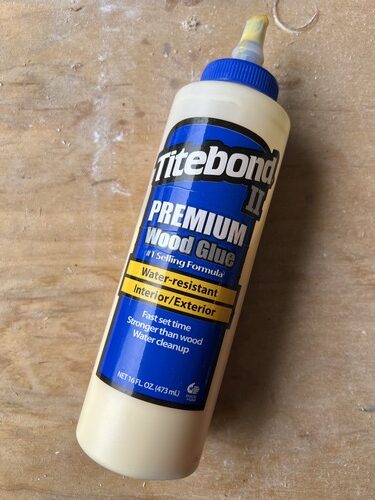
Wood glue, also known as carpenter’s glue, is specifically formulated for bonding pieces of wood. The most common type is PVA Glue (polyvinyl acetate) glue, but there are also other types like polyurethane and hide glue.
How is Wood Glue so strong? Wood glue penetrates the wood fibers, creating a strong bond that is often stronger than the wood itself. The wood will typically not break at the wood surfaces glue joint. But instead somewhere else around the joint where the wood fibers have more give.
We always know when there are bare clean wood pieces, wood glue is hands down our choice for woodworking projects. The way wood glued joint bonds the fibers is unmatched to any other adhesive options for bonding wood to wood projects.
Pros of Wood Glue:
- Strong bond: Ideal for wood-to-wood joints, often creating a bond stronger than the wood itself.
- Easy cleanup: Excess glue can be wiped off with water while it’s still wet, making it easy to manage.
- Non-toxic: Most wood glues are non-toxic and safe to use indoors.
- Dries clear: Many wood glues dry to a clear or light color, making them less visible on finished projects.
Cons of Wood Glue:
- Limited to wood: Not suitable for bonding other materials like metal or plastic.
- Requires clamping: To achieve the best bond, the piece of wood needs to be clamped together until the glue dries.
- Not gap-filling: It’s thin and runny, so it doesn’t fill gaps as well as Liquid Nails.
- Water sensitivity: Standard wood glue isn’t waterproof and considered a water-based adhesive. Although there are waterproof varieties like Titebond III. Typically best for indoor use and not to be exposed to extreme weather conditions.
When to Use Liquid Nails

Liquid Nails is your best bet for projects where your desired results are to bond different materials together, fill gaps, or when working on outdoor projects where water resistant is crucial. It’s also a good choice when clamping is difficult or when you need a quick initial hold.
Best applications for Liquid Nails:
- Bonding wood to metal, concrete, or drywall.
- Installing molding, paneling, or trim.
- Outdoor projects where moisture is a concern since it is weather resistant.
- Projects involving irregular surfaces where gaps need to be filled.
When to Use Wood Glue
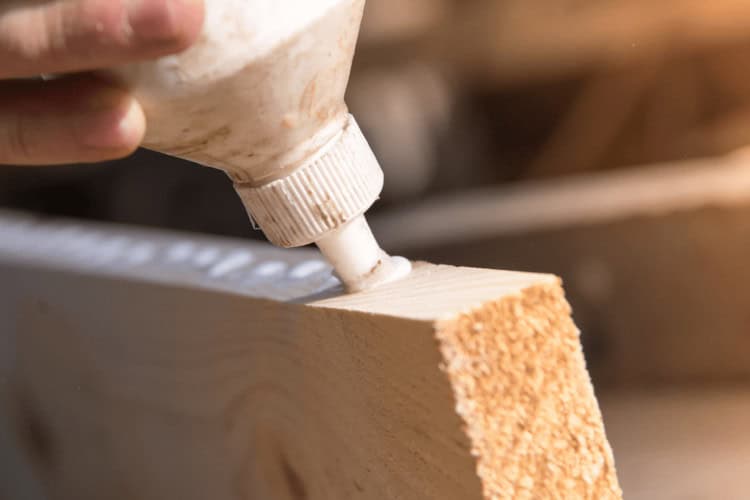
Wood glue is ideal for projects that require strong, precise wood-to-wood bonding. It’s the preferred choice for most fine woodworking, furniture making, and cabinetry, where a strong, durable bond is essential. The clean finish and ease of use make it the go-to for indoor projects.
Best applications for wood glue:
- Furniture making and repair.
- Cabinetry and fine woodworking.
- Wood joinery like dowels, dovetails, and mortise-and-tenon joints.
- Projects where clamping is possible and a strong wood-to-wood bond is needed.
Before you go…
Choosing the better choice between Liquid Nails and woodworking glue comes down to the various materials of your project. If you’re working with different materials, need gap-filling properties, or require a strong outdoor bond, Liquid Nails is the way to go for a more solid bond.
However, if your project involves precise wood joinery, furniture making, or any situation where a strong, clean wood-to-wood bond is essential, wood glue is your best bet.
Understanding the key differences, strengths and limitations of each adhesive will help you make an informed decision, ensuring your project is as strong and durable as possible. Whether you’re a seasoned woodworker or DIY enthusiasts, having both Liquid Nails and wood glue in your toolkit will prepare you for a wide range of projects.
PRO TIP: Liquid Nails comes in the form of a caulking gun tube and makes applying so much easier. Your caulk gun comes with a cartridge tip cutter built in! Liquid Nails and Wood Glue can be readily found at your local stores with hardware supplies.
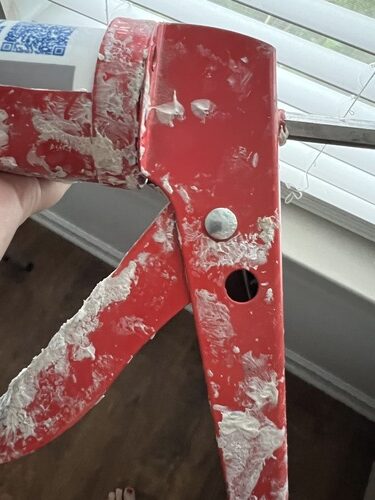
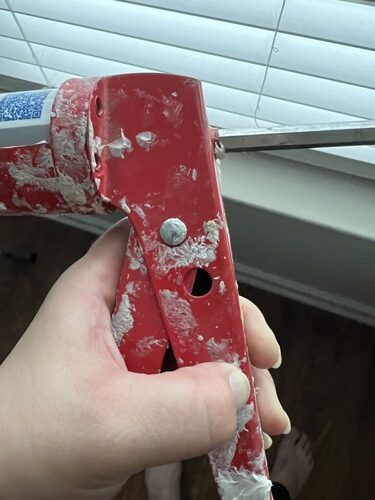
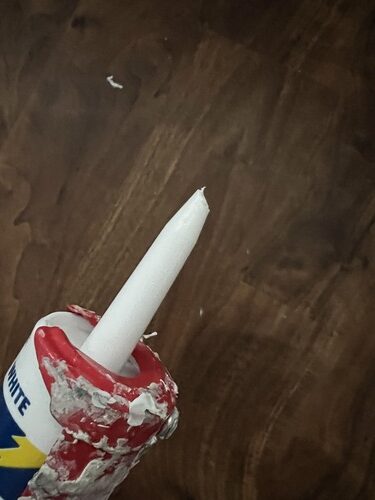
If or when you do your DIY project with your adhesive of choice Liquid Nails vs Wood Glue, I’d love for you to tag us on Instagram so I can see your really fun DIY projects come to life!
COZY HOME, COZY RECIPES:
Every cozy home deserves amazing recipes, and it’s even better when those recipes are both delicious and healthy. Our goal is to provide tasty meals that are easy to make, regardless of your skill level.
Fast, easy meals leave more time for fun activities, making your home a hub of joy and good food.
CONNECT WITH US:
As always, we love hearing about your experiences with our “Liquid Nails vs Wood Glue: When to use both?”. Reach out to us through our social channels. Any questions you have, we’re here to answer.
Stay updated by joining our newsletter, offering a monthly dose of new recipes and a first look at upcoming projects.
MORE COZY KITCHEN RECIPES:
If you’re hungry for more, explore our collection of Cozy Kitchen Recipes. Another healthy favorite is the “Sausage Potato Veggie Bake.” Find these recipes and more here.
DIY RESOURCES:
For additional resources, check out our DIY Tutorials, offering a wealth of information to enhance your home improvement skills.
